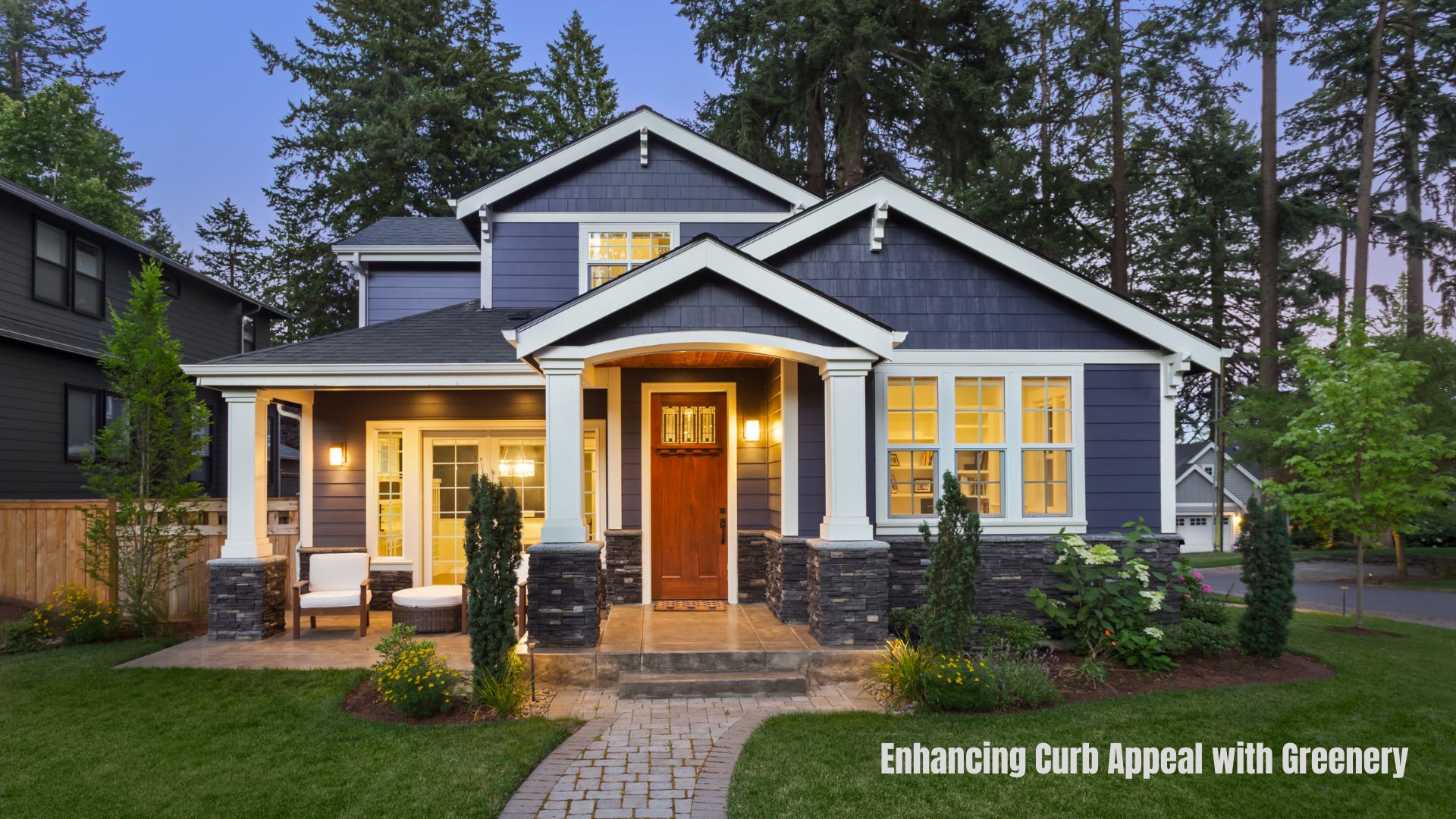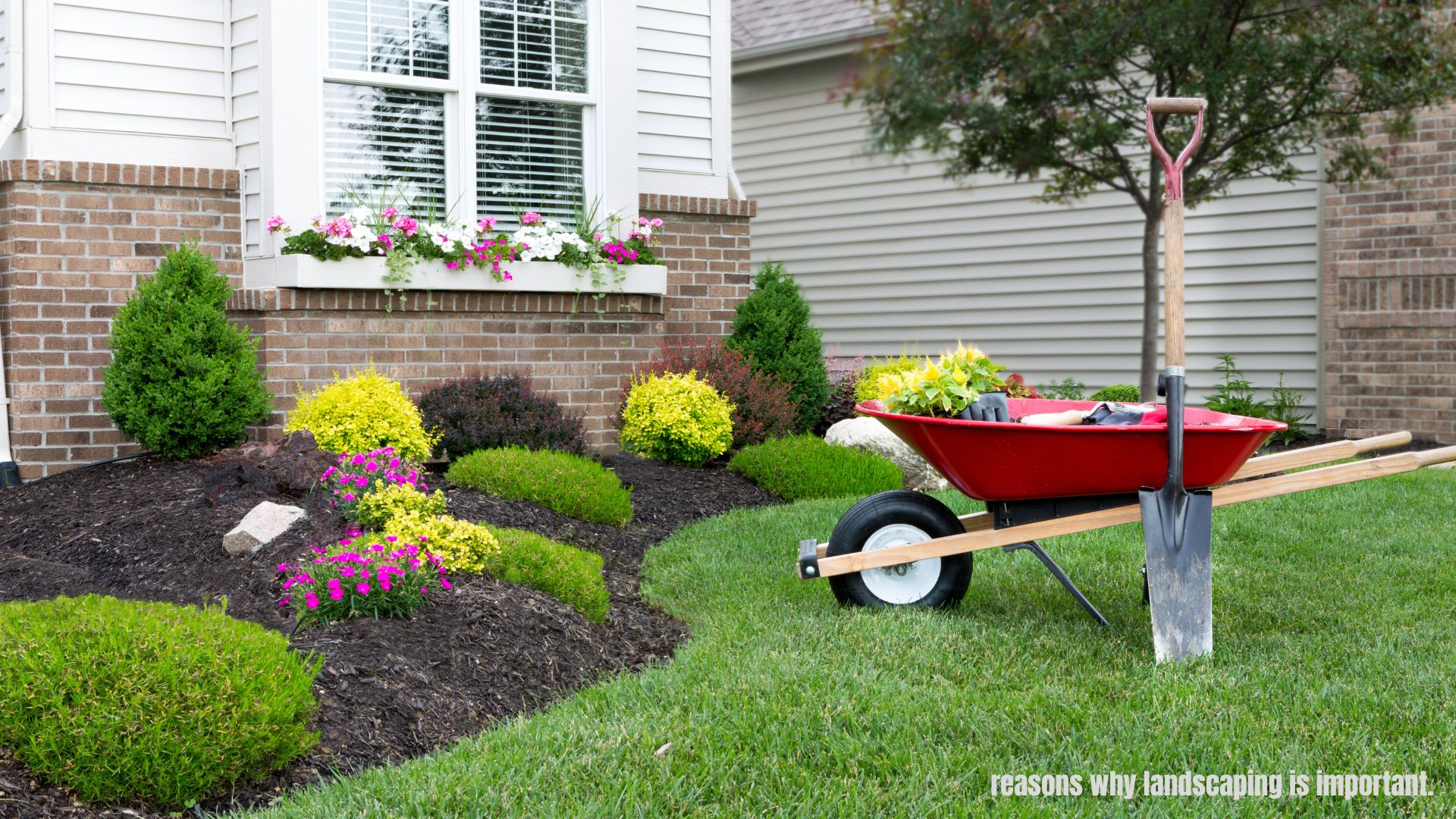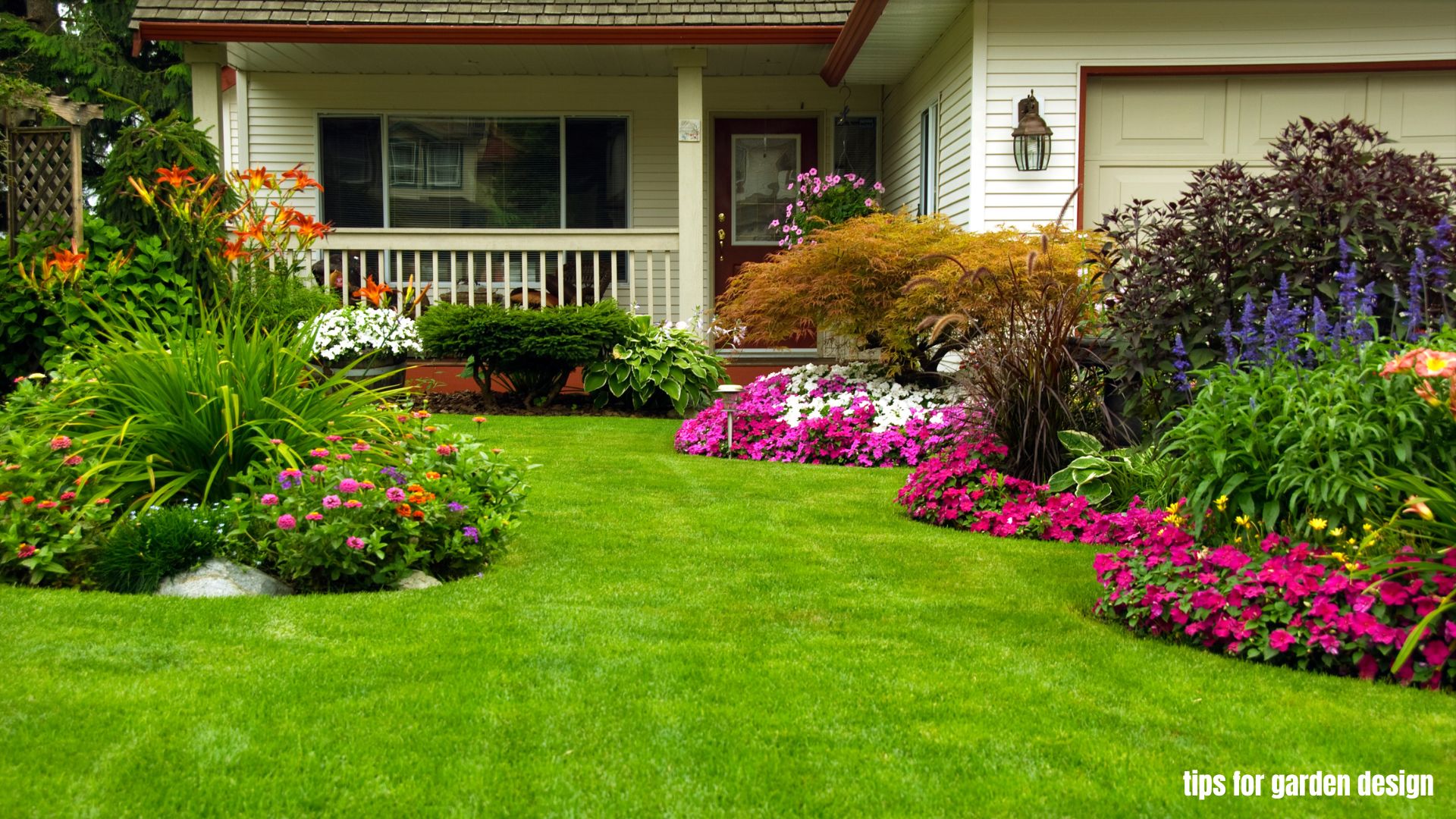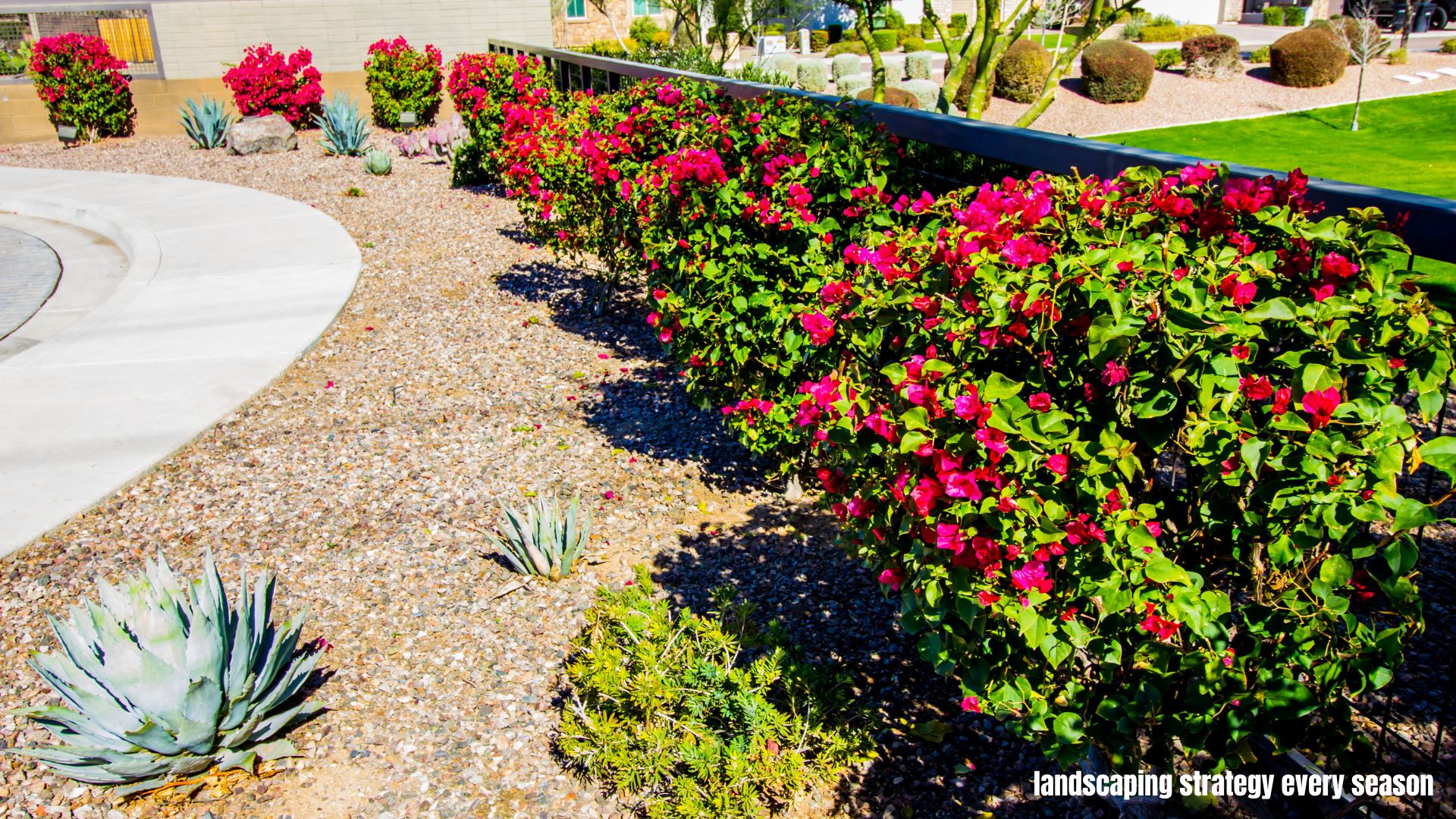Looking to make a lasting impression with your home's exterior? You're on the right track. With sustainable landscaping ideas and eco-friendly garden designs, you can elevate your property's curb appeal and create a welcoming outdoor space.
Using native plants and efficient irrigation techniques beautifies your space and promotes biodiversity and water conservation. Remember, a well-landscaped front yard doesn't just boost the property value; it tells a story of care and environmental consciousness.
Dive into this guide to uncover the transformative impact of landscaping and the principles of design that can make your home stand out!

How to Improve Curb Appeal with Landscaping
Landscaping is more than just a cosmetic upgrade; it's an investment in your home. A well-planned garden, vibrant lawn, and strategically placed plants can dramatically improve your home's curb appeal.
Combining greenery with functionality creates a beautiful outdoor space that adds value to your property. So, let's dive into the nitty-gritty of how you can transform your front yard into a paradise!
The Importance of Landscaping in Enhancing Curb Appeal

According to a study by the National Association of Realtors, enhancing your property's curb appeal can boost its price by up to 17 percent. Landscaping plays a crucial role in this.
Whether you're looking to sell your home or simply take pride in its appearance, focusing on how to improve curb appeal with landscaping can make a significant difference.
Improving Lawn Quality
A well-maintained lawn serves as the canvas for your landscape artistry. Regular maintenance, soil testing, and fertilization can keep your lawn vibrant and healthy. A lush, green lawn is often the first thing people notice, so investing in quality grass seed and regular watering can pay off in spades.
Additionally, consider aerating your lawn at least once a year to allow nutrients to penetrate the soil, leading to a healthier lawn.
Pest Control
Keeping pests off your lawn is essential for maintaining its quality. Products like Sevin Insect Killer Lawn Granules can protect your lawn for up to three months. A pest-free lawn looks better and is healthier for your plants and trees.
Enhancing Foundation Plantings
Plants around your home's foundation can accentuate its features and provide year-round appeal. Evergreens and ornamental grasses are excellent choices for this purpose. These plants can hide unsightly foundation walls and create a seamless transition from the lawn to the house.
Adding a layer of mulch around these plantings enhances their appearance and helps retain soil moisture.
Adding Landscape Focal Points
A single tree or a piece of statuary can serve as a focal point, drawing attention and adding value to your property. For example, a well-placed birdbath or a small gazebo can be a conversation starter and make your property more memorable. (Related article: 12 Native Florida Trees For Eco-friendly Landscaping)
6 Examples of Effective Landscaping

Now that we’ve established the importance of landscaping ideas, let’s discuss some actionable tips for garden design and optimizing your outdoor space.
Choose Plants Wisely
Opt for plants native to your area and suit the local climate. For example, consider drought-tolerant plants like succulents or cacti if you live in the Southwest.
In more temperate climates, flowering plants like azaleas or hydrangeas can thrive. Also, consult with local nurseries or gardening experts to find plants best suited for your specific soil type and sunlight conditions.
Use Color Strategically
Incorporate plants with colorful foliage or blooms that complement your home's exterior. For instance, if your home is painted in cool tones, plants with blue or purple flowers like lavender or salvia can add a harmonious touch.
Warm-toned homes can benefit from plants with red, orange, or yellow blooms, such as marigolds or chrysanthemums.
Keep it Low-maintenance
When it comes to landscaping, less can often be more. Opt for easy-care plants and materials that don't require frequent upkeep. Dwarf shrubs like boxwoods or dwarf lilacs can provide color and texture without constant pruning.
Perennial flowers such as lavender or coneflowers are also excellent choices as they bloom year after year with minimal care.
Incorporate Hardscaping
Hardscaping is not just about adding functional elements; it's also an art form that can significantly enhance your landscape's visual appeal. Consider adding pathways, patios, and retaining walls to add structure and function to your landscape.
For example, a cobblestone pathway to a wooden arbor covered with climbing roses can create a rustic, inviting entrance. Retaining walls made from natural stone can serve as both a functional and decorative element, helping to prevent soil erosion while adding a touch of elegance.
Lighting Matters
The right lighting can transform your landscape from ordinary to extraordinary. Proper lighting can highlight your landscape features and add a sense of drama when the sun goes down. Solar-powered lights are an eco-friendly and cost-effective option that can illuminate a pathway or highlight a focal point like a water feature or a unique plant. Alternatively, string lights can add a whimsical touch to your outdoor space.
Water Features
Adding a water feature can bring a sense of tranquility and luxury to your landscape. Water features add a dynamic, peaceful element, whether a small pond, a fountain, or even a simple birdbath.
Make sure the feature you choose is proportionate to the size of your yard. A tabletop fountain or a small koi pond can work wonders for smaller yards. If you have more space, consider a larger pond with a waterfall feature for a more dramatic effect. Remember to keep the water clean and the pump well-maintained to ensure your water feature remains an asset rather than becoming a liability.
Seasonal Landscaping Ideas

Seasons change, and so should your landscaping strategy. Here's how you can adapt your front yard to each season.
Spring
The perfect time to plant annuals like petunias, marigolds and perennials such as hostas and daylilies. If you're looking to add more functionality to your yard, consider installing a vegetable garden. Not only will it make your outdoor space more beautiful, but it will also provide fresh produce for your kitchen.
Spring is also the ideal time to fertilize your lawn; using a slow-release fertilizer can give your grass the nutrients it needs for robust growth. Pruning is another essential spring task.
Summer
Summer is when your garden is in full swing, and maintenance becomes crucial. Your lawn needs regular mowing, and your garden beds require weeding. To bring a tropical flair to your yard, consider adding plants like hibiscus or bird of paradise; they thrive in the heat and add vibrant colors.
Autumn
Autumn is a season of transition and preparation. This is the ideal time for planting bulbs like tulips and daffodils that will bloom in the spring, offering a burst of color after the winter thaw. This is also the critical season for leaf removal; allowing leaves to accumulate can lead to mold growth and lawn diseases.
Pro tip: Don't forget to apply a fall fertilizer to give your lawn the nutrients it needs to survive the winter months. If you have fruit trees, this is also the time to harvest and prune them.
Winter
While winter may seem like a downtime for landscaping, it offers opportunities. Focus on evergreens and winter-hardy plants like holly or winter jasmine to add greenery and color to an otherwise barren landscape.
Winter is also the perfect time to plan your landscaping for the upcoming year. Browse gardening magazines and websites or take a virtual landscaping course to gather new ideas and inspiration. Consider sketching a new design or consulting a professional landscaper to prepare for the spring.
Final Thoughts
Landscaping is more than just beautifying your space; it's about creating a sustainable, eco-friendly garden that promotes biodiversity. By incorporating native plants and efficient irrigation, you enhance your home's curb appeal and contribute to water conservation.
With the right blend of landscaping principles of design, the possibilities to create a unique, environmentally responsible outdoor sanctuary are endless. Ready to make your home a green masterpiece that's the talk of the neighborhood?
(Related article: How to Maximize the ROI of Your Landscaping Project)

